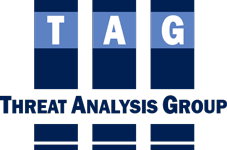In November 2013, GAO reported that (1) peer-reviewed, published research we reviewed did not support whether nonverbal behavioral indicators can be used to reliably identify deception, (2) methodological issues limited the usefulness of DHS’s April 2011 SPOT validation study, and (3) variation in referral rates raised questions about the use of indicators. GAO reported that its review of meta-analyses (studies that analyze other studies and synthesize their findings) that included findings from over 400 studies related to detecting deception conducted over the past 60 years, other academic and government studies, and interviews with experts in the field, called into question the use of behavior observation techniques, that is, human observation unaided by technology, as a means for reliably detecting deception. The meta-analyses GAO reviewed collectively found that the ability of human observers to accurately identify deceptive behavior based on behavioral cues or indicators is the same as or slightly better than chance (54 percent). GAO also reported on other studies that do not support the use of behavioral indicators to identify mal-intent or threats to aviation.
GAO found that DHS’s April 2011 validation study does not demonstrate effectiveness of the SPOT behavioral indicators because of methodological weaknesses. The validation study found, among other things, that some SPOT indicators were predictive of outcomes that represent high-risk passengers, and that SPOT procedures, which rely on the SPOT behavioral indicators, were more effective than a random selection protocol implemented by BDOs in identifying outcomes that represent high-risk passengers. While the April 2011 SPOT validation study is a useful initial step and, in part, addressed issues raised in GAO’s May 2010 report, methodological weaknesses limit its usefulness. Specifically, as GAO reported in November 2013, these weaknesses include, among other things, the use of potentially unreliable data and issues related to one of the study’s outcome measures.

